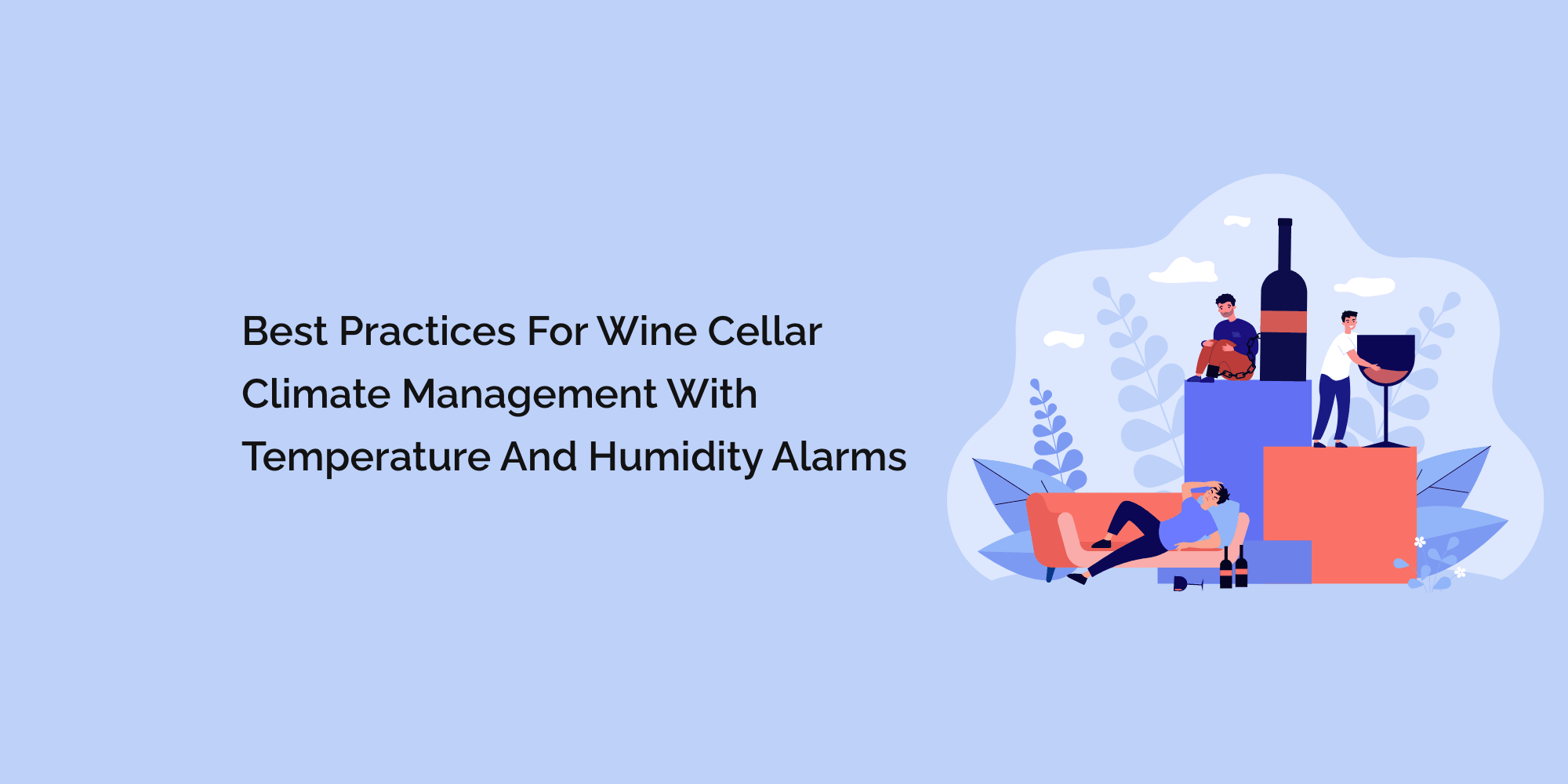Creating the perfect environment for wine storage is crucial for preserving your wine collection's quality, flavor, and aging potential. Temperature and humidity are critical factors in maintaining optimal conditions, and using temperature and humidity alarms is an innovative and proactive approach. This blog will discuss the best practices for wine cellar climate management with temperature and humidity alarms. From setting the right temperature and humidity levels to monitoring and responding to alerts, we will explore the steps necessary to ensure your wines thrive in a controlled and stable environment. By implementing these best practices and utilizing temperature and humidity alarms, you can safeguard your investment and enjoy the full expression of your wines.
Understanding the Importance of Temperature and Humidity in Wine Cellars
We will delve into the role of temperature and humidity in wine cellar climate management. Explaining the impact of these factors on wine aging and preservation, we will emphasize the need for precise control and consistent conditions. Understanding the ideal temperature and humidity range for wine storage is fundamental to implementing effective climate management practices.
Selecting the Right Temperature and Humidity Alarms
Choosing the appropriate temperature and humidity alarms for your wine cellar is essential for accurate monitoring. We will discuss factors to consider when selecting an alarm system, including sensor accuracy, reliability, user-friendly interfaces, remote monitoring capabilities, customization options, and integration possibilities with other cellar management systems.
Setting the Ideal Temperature for Wine Storage
We will explore the recommended temperature range for wine storage and the impact of temperature fluctuations on wine aging. Discussing the specific temperature requirements for different wine varieties, we will provide guidelines for setting and maintaining the optimal temperature in your wine cellar using temperature alarms.
Managing Humidity Levels in the Wine Cellar
Proper humidity control is crucial for preserving wine quality and the integrity of corks. We will explain the ideal humidity range for wine storage and the consequences of inadequate humidity. Discussing the impact of moisture on wine closures and labels, we will highlight the importance of humidity alarms in maintaining the proper moisture levels.
Sensor Placement and Calibration
We will guide sensor placement within the wine cellar to ensure accurate readings. Discussing the importance of avoiding direct contact with light or heat sources, we will explore the optimal positioning of temperature and humidity sensors. Additionally, we will emphasize the significance of regular sensor calibration for reliable performance.
Monitoring and Responding to Temperature and Humidity Alerts
Temperature and humidity alarms are designed to provide real-time alerts when conditions deviate from the desired range. We will discuss the importance of actively monitoring alarm notifications and responding promptly to maintain the cellar's climate. We will emphasize the significance of quick action by exploring the steps to take when receiving alerts, such as adjusting temperature controls or addressing humidity imbalances.
Maintaining Proper Air Circulation and Ventilation
Proper air circulation and ventilation contribute to a healthy wine cellar environment. We will discuss the importance of allowing air to circulate wine bottles and avoiding stagnant air pockets. We will highlight the synergy between alarms and ventilation systems for effective climate management by exploring the role of ventilation systems in controlling temperature and humidity.
Consistent Cellar Inspections and Maintenance
Regular inspections and maintenance are crucial to ensuring optimal wine cellar conditions. We will provide a checklist for cellar owners, including checking for water leaks, evaluating insulation, monitoring equipment performance, and cleaning the cellar environment. Regular maintenance helps prevent issues that could compromise climate management efforts.
Training and Education for Wine Cellar Management
Proper training and education are essential for successful wine cellar climate management. We will emphasize the importance of understanding the fundamentals of wine storage and the role of temperature and humidity. Highlighting resources such as books, courses, and industry experts, we will encourage cellar owners to enhance their knowledge and skills in cellar management.
Evolving with Technology: Integrating Smart Solutions
We will discuss integrating intelligent technology solutions with temperature and humidity alarms. Exploring the benefits of integrating alarms with cellar management software, remote monitoring systems, or mobile applications, we will highlight the convenience and enhanced control these innovative solutions provide.
Certainly! Here are some frequently asked questions (FAQs) about wine cellar climate management with temperature and humidity alarms:
Why is temperature and humidity control necessary in a wine cellar?
Temperature and humidity control are crucial in a wine cellar to maintain optimal aging conditions. Fluctuations in these factors can negatively impact wine quality, accelerate aging, and lead to spoilage. Alarms help monitor and regulate these conditions, ensuring wines are stored in a stable environment.
How do temperature and humidity alarms work in a wine cellar?
Temperature and humidity alarms utilize sensors in the wine cellar to measure and monitor environmental conditions. These sensors transmit data to a central monitoring unit or software that analyzes the readings. If the temperature or humidity deviates from the desired range, the alarm system triggers alerts, allowing cellar owners to take corrective action.
What are the ideal temperature and humidity ranges for wine storage?
The ideal temperature for wine storage generally ranges from 55°F (13°C) to 59°F (15°C). Humidity levels should be maintained between 50% and 70%. However, specific recommendations may vary depending on the wine type and aging requirements. It is essential to consult guidelines for different wine varieties.
Conclusion
Effective climate management in wine cellars is crucial for preserving wines' quality and aging potential. By implementing best practices, including temperature and humidity alarms, cellar owners can create a controlled and stable environment for their wine collections. From setting the ideal temperature and humidity levels to monitoring and responding to alerts, these practices ensure wines to age gracefully and reach their full potential. By combining technology, knowledge, and proper maintenance, you can safeguard your investment, enjoy the true expression of your wines, and create a cellar environment that nurtures and enhances the wines' flavors and aromas. Cheers to successful wine cellar climate management!








